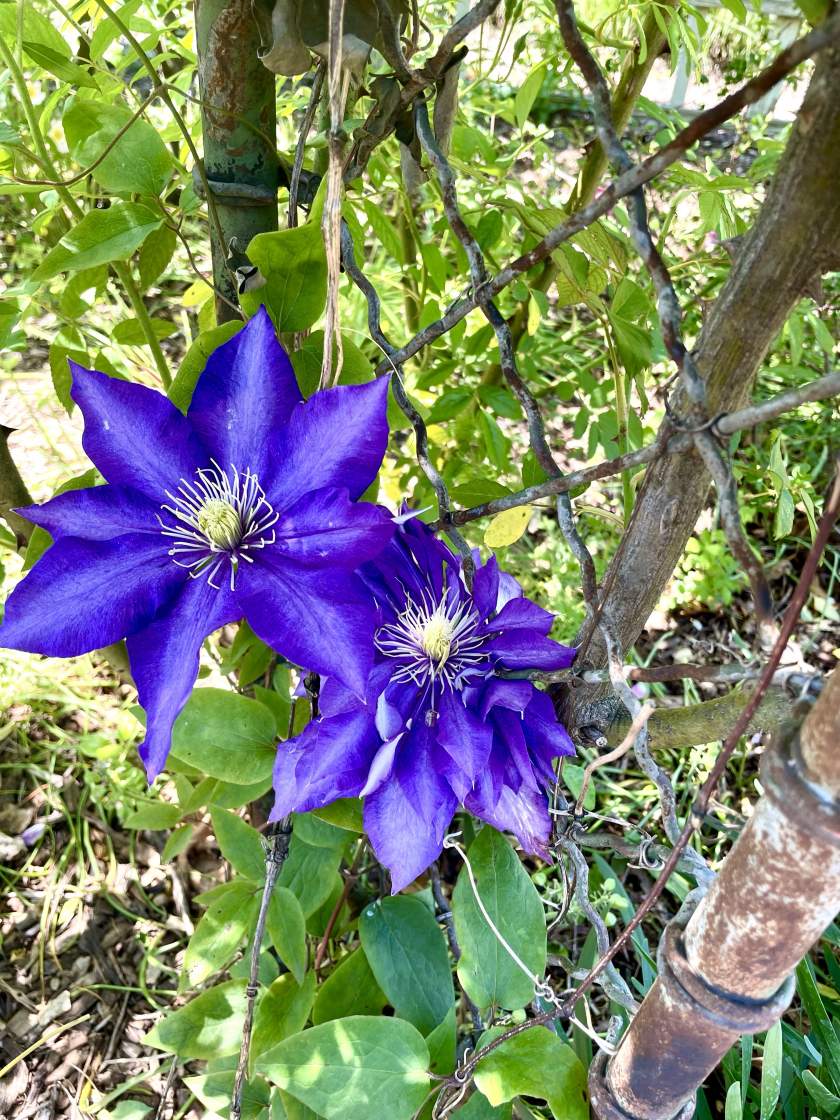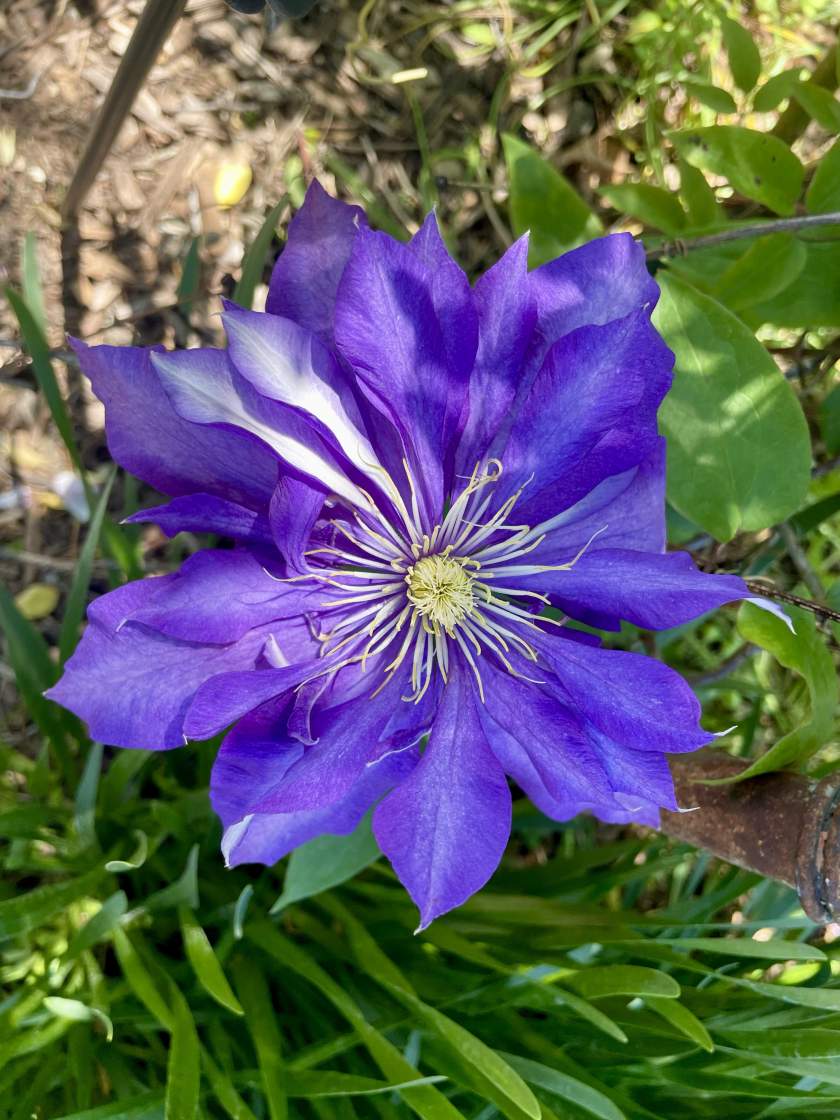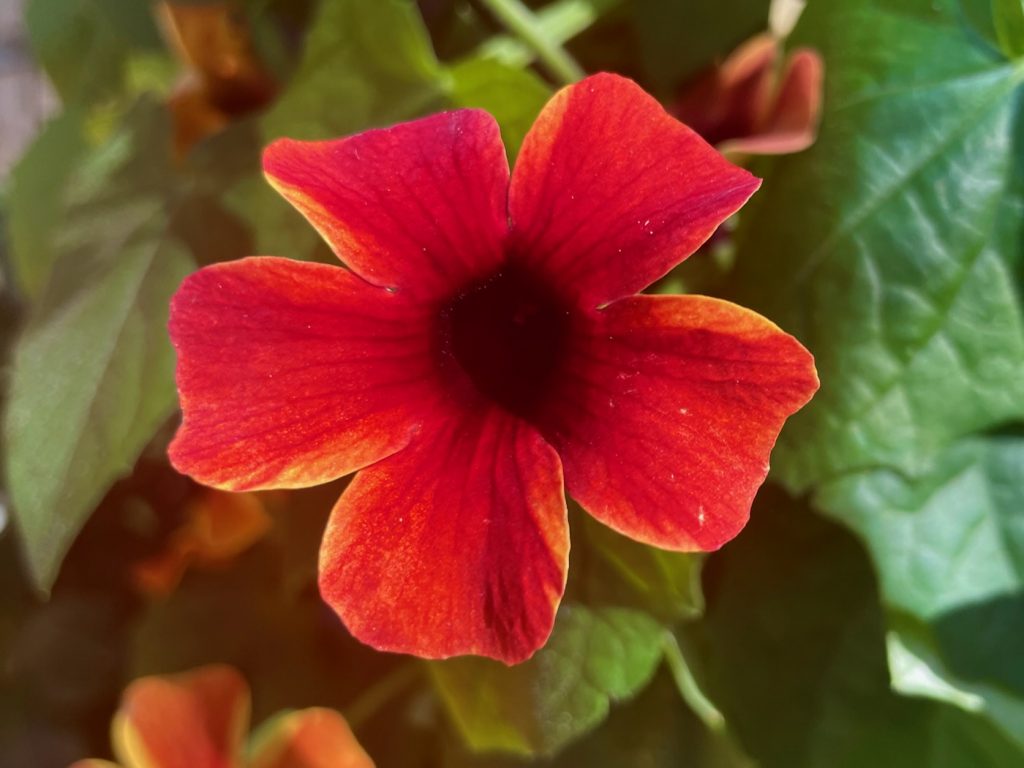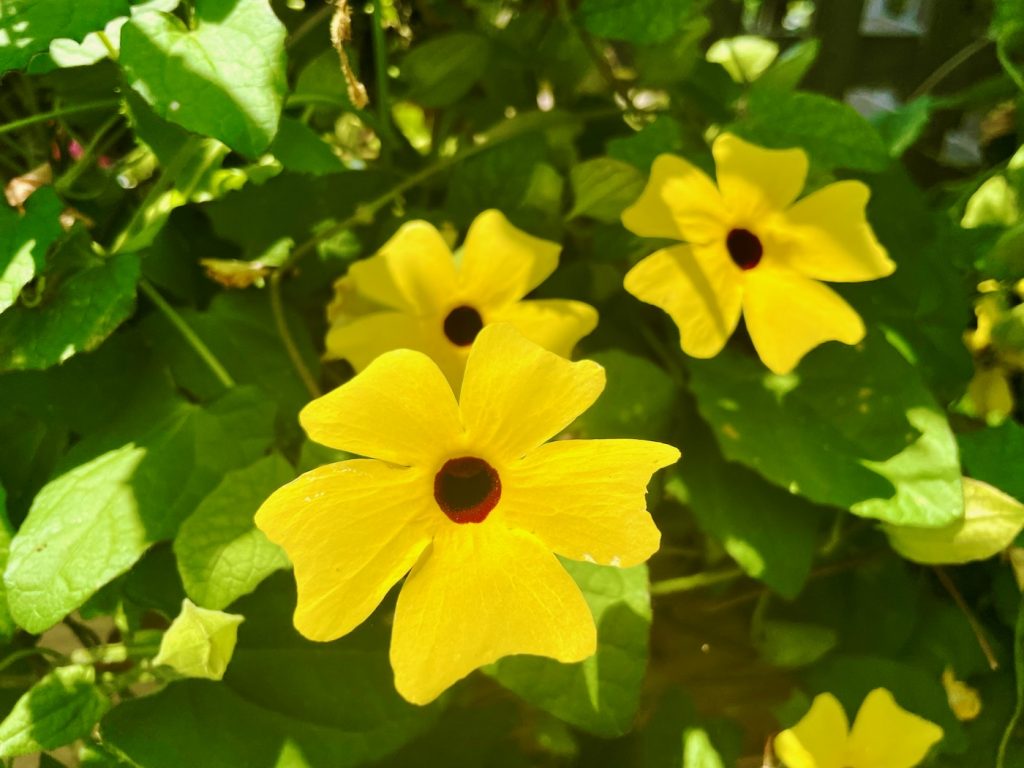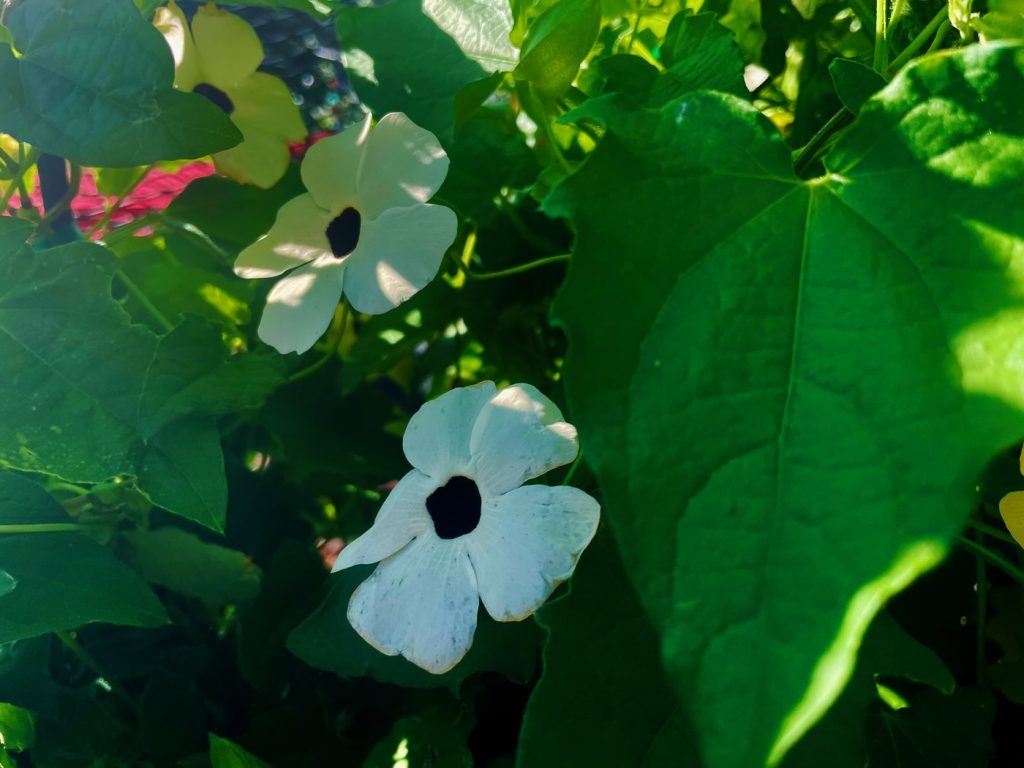Clematis ‘Daniel Deronda’: A Stunning Purple-Blue Clematis with Fragrant Flowers
Clematis ‘Daniel Deronda’ is a captivating large-flowered clematis cultivar that is highly regarded for its exquisite purple-blue flowers with creamy-yellow centers. This variety belongs to the Ranunculaceae family and is a member of the Clematis genus. The specific background and origin of ‘Daniel Deronda’ are not mentioned in available sources.
Characteristics and Description:
The flowers of Clematis ‘Daniel Deronda’ are extravagant and semi-double, reaching a remarkable diameter of 6-8 inches. Their petals gently fade from a deep purple-blue color at the edges to a delicate pale blue towards the center, creating a captivating visual effect. These striking blooms emerge in early summer and continue their display until the fall, especially if spent flowerheads are regularly removed.
The foliage of ‘Daniel Deronda’ consists of mid-green leaves that provide an attractive backdrop to the vibrant flowers. The plant is a deciduous climber that can grow up to 10 feet in height, adding vertical interest to any garden space.
Flowering Season and Fragrance:
Clematis ‘Daniel Deronda’ delights gardeners with its profuse blooming during the months of May, June, and September. The alluring fragrance or aroma of its flowers is not explicitly mentioned in available sources, indicating that it may not possess a distinctive fragrance.
Cultivation of Clematis ‘Daniel Deronda’:
Cultivating Clematis ‘Daniel Deronda’ requires attention to specific aspects of sunlight, watering, soil conditions, pests and diseases, and propagation. Here are some guidelines to ensure successful growth:
Sunlight: Position ‘Daniel Deronda’ in a location that receives full sun or partial shade. This clematis variety thrives when exposed to at least six hours of direct sunlight each day but can tolerate partial shade.
Watering: Provide regular and consistent watering to keep the soil moist, especially during the first year after planting. Avoid waterlogging the soil, as excessive moisture can lead to root rot. Maintaining a moderate level of soil moisture is crucial for the plant’s health and vitality.
Soil: Clematis ‘Daniel Deronda’ prefers fertile, well-drained soil with a neutral pH. A pH range of 6.5-7.0 is considered suitable. Ensure the soil is sufficiently enriched with organic matter and promotes good drainage.
Pests and Diseases:
Although ‘Daniel Deronda’ is generally a robust plant, it can still fall victim to common pests such as aphids, powdery mildew, and clematis wilt. Regularly inspect the plant for signs of infestation or disease, and take appropriate measures to control and prevent them. Insecticidal soaps or neem oil can effectively combat aphids, while fungicides may be necessary to manage powdery mildew. If clematis wilt is suspected, seek guidance from local experts for proper treatment.
Propagation: Clematis ‘Daniel Deronda’ can be propagated through division or cuttings. To propagate through division, carefully dig up the plant and use a sharp knife to separate the root ball into several sections, ensuring each section has 3-4 growth buds. Plant the divisions in well-drained soil and provide regular watering. Cuttings can also be taken by selecting a healthy 6-8 inch stem, removing the lower leaves, and planting it in a well-drained potting mix. Maintain soil moisture, and the cutting should develop roots within 4-6 weeks.
Pruning Tips for Clematis ‘Daniel Deronda’
Clematis ‘Daniel Deronda’ belongs to Group 2 of clematis varieties, which are known for their blooming habits and pruning requirements. Understanding how to properly prune Group 2 clematis, including ‘Daniel Deronda,’ is essential for maintaining their health, promoting vigorous growth, and ensuring abundant flower production. Here are some pruning tips specific to Group 2 clematis:
Pruning Timing: Group 2 clematis bloom on both old and new wood. Therefore, pruning should be done at the appropriate time to encourage new growth and maximize flowering potential. The ideal time to prune Group 2 clematis, including ‘Daniel Deronda,’ is in early spring, before the plant begins its new growth cycle.
Pruning Technique:
To prune Clematis ‘Daniel Deronda’ and other Group 2 clematis, follow these steps:
- Identify the previous year’s stems: Look for the woody stems that developed in the previous growing season. These stems will appear older and have a different texture compared to the new growth.
- Prune above a pair of strong buds: Using clean and sharp pruning shears, cut back the previous year’s stems to a pair of strong buds. The buds should be located about 15-20cm (6-8in) above the ground level. Pruning above healthy buds promotes new growth and encourages the development of new flowers.
- Fertilize and mulch: After pruning, apply a slow-release balanced fertilizer around the plant, following the manufacturer’s instructions. This provides essential nutrients for healthy growth. Additionally, apply a layer of well-rotted garden compost or mulch around the plant, avoiding direct contact with the immediate crown. Mulching helps retain moisture, suppress weeds, and improve soil fertility.
Benefits of Pruning Group 2 Clematis:
Proper pruning of Group 2 clematis, such as ‘Daniel Deronda,’ offers several advantages:
- Enhanced flower production: Pruning stimulates new growth, resulting in increased flower production. By removing older stems and encouraging the development of fresh shoots, you can enjoy a profusion of beautiful blooms.
- Improved plant health: Pruning allows for better air circulation and light penetration within the plant, reducing the risk of diseases and promoting overall plant health. It also helps maintain the desired shape and size of the clematis.
- Extended blooming period: Pruning in early spring encourages the plant to produce flowers throughout the growing season. ‘Daniel Deronda’ already boasts a flowering period from July to September, and proper pruning can potentially extend its blooming season.
Remember, each clematis variety within Group 2 may have slightly different growth habits and pruning requirements. However, the general principles outlined here will help you successfully maintain and care for Clematis ‘Daniel Deronda’ and other Group 2 clematis varieties, ensuring their beauty and vitality year after year.
By following these cultivation guidelines, gardeners can enjoy the captivating beauty of Clematis ‘Daniel Deronda’ and create a stunning focal point in their gardens. Its vibrant flowers, reliable performance, and easy-care nature make it a beloved choice for both experienced and novice gardeners alike.
